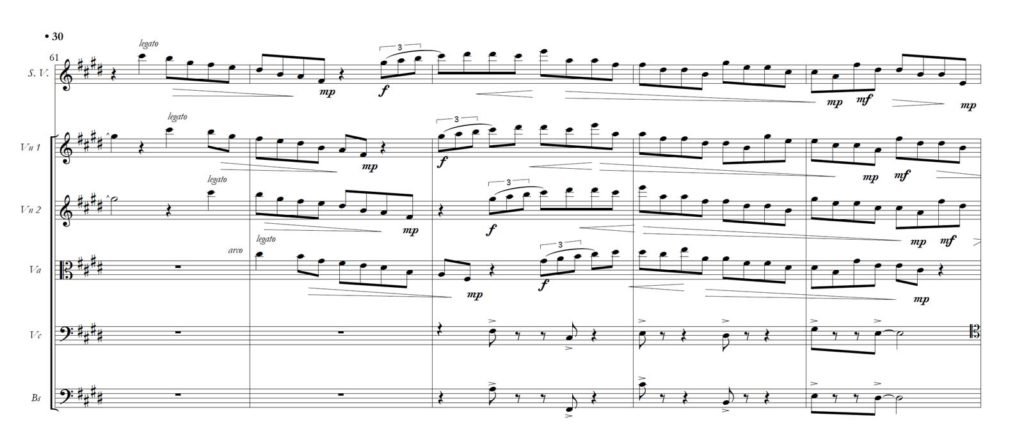Children On The Playground is a 17 minute, three-movement Concerto for Violin and Strings that strives to engage the audiences’ imaginations through story and uncluttered composition, originally composed in 1999 and 2000 for Alex Dean’s premiere performance in 2002 with the Air Force String Orchestra. The work won the Riverside Symphony International Composition along with four other composers in 2002 for a reading by Riverside with violinist Cenovia Cummins at Fordham University, then the Grand Prize of that competition in 2004 for a performance in Lincoln Center’s Alice Tully Hall, also featuring Cenovia Cummins, receiving a rave review in the New York Times.
1. Joyful Play
In the first movement, “Joyful Play,” the soloist portrays an eight-year-old alpha kid leading a mini-mob of friends. Each friend is represented by one of the five choirs of the string orchestra. These kids are conjuring up something grand and vivid on a schoolyard or in a park somewhere. The solo violin (here we see Sir Tamas Kocsis with the Orlando Philharmonic Orchestra) sparks and inspires the other kids’ imaginations into a hugely dramatic, semi-evil, megalomaniacal glory, so typical of kids. The cadenza brings them back down to reality, and the fun continues. I felt the traditional sonata form suited this story nicely.


The best aspect of “On the Playground,” a de facto 15-minute concerto for violin and string chamber orchestra, was its bracing musical language. Mr. Lay has a distinctive compositional voice. – Anthony Tommasini, NYTimes
2. Yearning
While creating the second movement, “Yearning,” I remembered my own adolescent feelings of melancholy. I’d seek refuge via rapturous escape in the sky. The luminous sonority of high strings in diatonic clusters is like high-altitude clouds and provides a setting for the long, sweeping solo phrases seeking a soaring deliverance.

… But what makes the music sound up-to-date and not like some pastiche comes from Mr. Lay’s penchant for fracturing phrases. Just when a spiraling melody dancing atop a jaunty rhythmic pattern takes off, it discombobulates into jagged bits and pieces. – Anthony Tommasini, NYTimes
3. Follow The Leader
The last movement, “Follow the Leader,” is, as it sounds, a fast frolic. The solo violin cajoles and sometimes runs away from the group, who chase a single step behind. Each string choir imitates the soloist, but entrances are carefully timed to avoid one stepping on the other. This produces a close, stretto canon, like a flock of finches in flight. Each chase ends in happy chaos, thus providing a clear outline of a rondo form. If you listen, you’ll find out if they caught the leader or not.
For the 2022 recording with Milan Palá, I composed a new introduction to this movement that neither Tamas, Cenovia or Alex never saw. It does a better job of introducing the theme. Beginning as an attaca mini-cadenza out of the high solo harmonic which ends the previous movement, it rises to the most delicate highest heights available to a violin, and falls to its lowest. The string quartet heard in “Yearning” help him up and together the build momentum that kindles the whole ensemble to a chase. I hope you get to hear this new addition!


